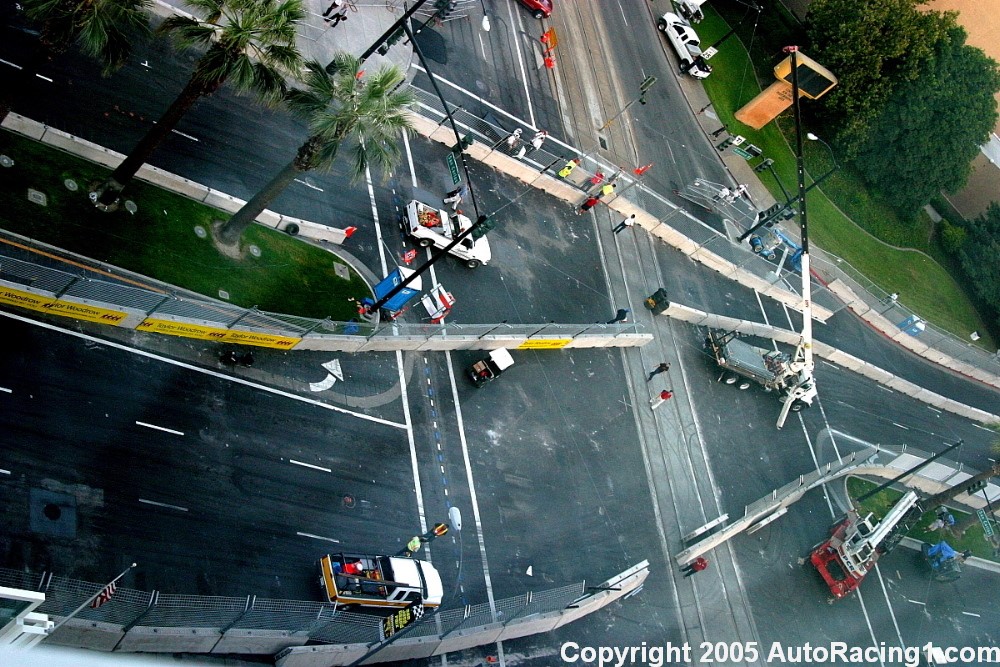RR tracks a bump in the road for Baltimore GP
 |
| Champ Cars had to jump RR tracks in San Jose in 2005 and 2006. It was spectacular to say the least |
Baltimore Grand Prix engineers are still scouting out a solution to one potential snag: light rail tracks that cross the course near Camden Station. The tracks at the intersection of Howard and Conway streets are too high for the low-slung cars to zoom over, but removing them would be costly and disruptive to rail service reports the Baltimore Sun.
"This is a big problem and it's going to impact a lot of people," said Wane-Jang Lin, manager of track and structural engineering for the Maryland Transit Administration.
MTA officials balked at a proposal by race staffers to grind down the rails. The two sides have struck a compromise: the tracks can be temporarily covered from Thursday night until Tuesday morning.
"The design challenge is that we have to cover the railroad tracks with something smooth and resilient enough to not be disturbed by the enormous power of a race car, but that we can install in a night and remove in a night," said Thake, who has designed race courses around the world. "To my knowledge, that's never been done before."
Workers from Flanigan are experimenting with covers on unused rail tracks, Thake said. And he has designed two wide turns flanking the tracks, in order to slow drivers down.
Pete Hilton, chair of the motorsports engineering program at Indiana University- Purdue University Indianapolis, says designing a safe and durable cover for the tracks will be no easy feat. The cars exert an enormous amount of force, and the wheels are capable of ripping up loosely fastened objects, he says, and any changes to the racing surface could have a profound impact on the cars.
"The handling of these cars is very important, especially when there are turns," said Hilton. "Any kind of bump in the road would be very unsettling."
Shutting down a section of the light rail during an event that closes many downtown streets and limits access to parking lots, meanwhile, could lead to transportation nightmares. MTA officials plan to run a bus bridge between open light rail stops, but need to map a route that won't leave buses snarled in race traffic.
"We want to bring people as near as possible," while allowing safe spaces for riders to enter and leave the bus, Lin said. Rail stops must also adhere to the guidelines of the Americans with Disabilities Act.
Lin and Thake say they are in frequent communication and hope to work out a solution soon.
"We don't want to wait until the last minute," said Lin.
Baltimore Racing Development has signed a five-year contract with the Indy Racing League. After the first year, subsequent editions of the Baltimore Grand Prix should be easier to stage.
Whether the event is a success, once the challenges are met, will depend largely on turnout.
